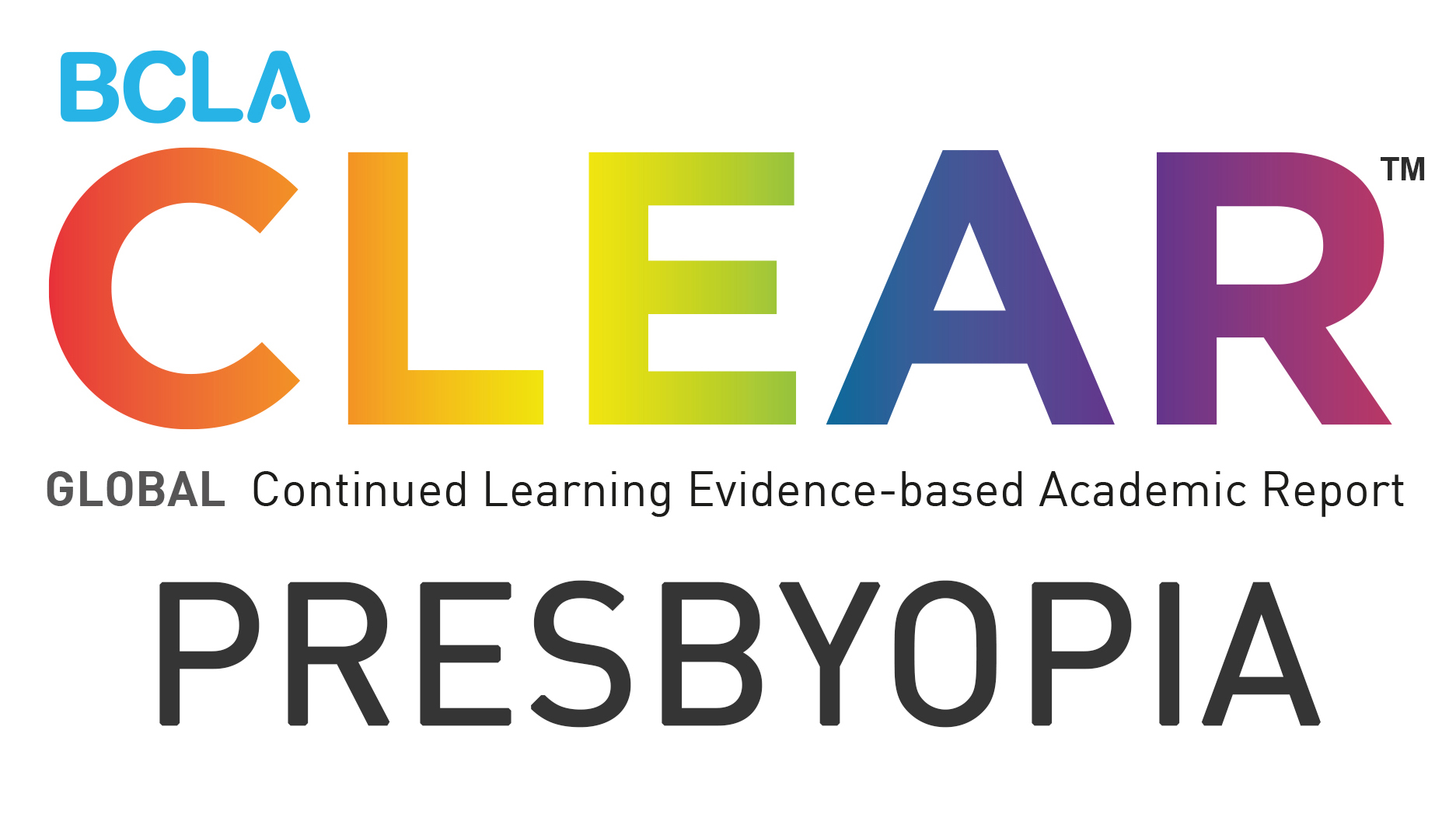BCLA CLEAR™ Presbyopia: Management with Corneal Techniques
As technology-driven refractive surgery treatment for visual correction gains popularity, a new paper is providing eye care practitioners with a better understanding of the key management approaches involving the cornea to treat

presbyopia.
The paper is the sixth in a series to be released as part of the new BCLA CLEAR™ Presbyopia (continued learning evidence-based academic reports) – a global consensus report put together by the BCLA.
This report summarises pre-operative assessments, treatment options and post-operative management and provides invaluable guidance on the safety and efficacy of the procedures and their ongoing impact on the patient using Quality of Life and Quality of Vision measures.
In addition to approaches such as laser vision correction and corneal inlays, the role of corneal reshaping by orthokeratology is reviewed. All of these are assessed in terms of monovision vs spherical aberration induction and multifocality.

The paper’s first author is Jennifer Craig – a Professor in Ophthalmology at the University of Auckland in New Zealand. Jennifer’s research interests are in the ocular surface, primarily dry eye disease and tear film dysfunction.
Jennifer Craig said: “This paper strives to empower eye care practitioners with an enriched understanding of pivotal management strategies centred around the cornea, advancing the treatment options for presbyopia.”
The paper, titled ‘Management with Corneal Techniques’, will be released as part of a new series of evidence-based guidance available to eye care professionals around the world on all aspects of prescribing and fitting contact lenses as part of a concerted drive to provide the best possible patient care.
BCLA CLEAR™ Presbyopia was facilitated by the BCLA, with financial support by way of educational grants for collaboration, publication and dissemination provided by Alcon, Bausch+Lomb, CooperVision, EssilorLuxoticca, and Johnson & Johnson Vision. It will be published in the BCLA journal ‘Contact Lens and Anterior Eye’ and will feature work from panels of globally respected experts.
It will build on the impact of the first issue published in April 2021, which has proved an essential reference point for contact lens professionals across the world. The report will be made available to both BCLA members and non-members.